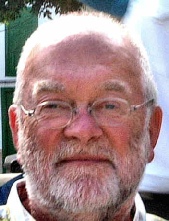
10 december 2020


All original writing

2014, 2015, 2016,
2017, 2018, 2019,
2020, 2021, 2022,
2023, 2024
Dr Ian McLauchlin


ANSWERS TO XMAS QUIZ 2017
1.Beatles singles
- Love me do
- I feel fine
- Ticket to ride
- She loves you
2. Who was born first?
- William Shakespeare 1564-
1616 - Elizabeth I 1533-
1603 YES - Sir Francis Drake 1540-
1596
3. Town in Somerset
- Frome
4. What is the connection between these?
They're the forenames of the main actors in TV's 'New Tricks'.
5. And these?
They can all be combined with 'thinking' to make a common phrase.
6. Music Quiz, 12 tracks. Name that tune.
- Ob-
La- Di, Ob- La- Da - The Beatles - Yellow -
Coldplay - Money Money Money -
Abba - Mustang Sally -
Andrew Strong - Tangled up in blue -
Bob Dylan - You're so vain -
Carly Simon - Letter from America -
The Proclaimers - You can call me Al -
Paul Simon - Walking on the moon -
The Police - Suddenly I see -
KT Tunstall - Whistle for the choir -
The Fratellis - That'll be the day -
Buddy Holly
7. Bridges:
- Clifton Suspension Bridge, Bristol, UK
- Eshima Ohashi, Japan
- Forth Rail Bridge, Scotland
- Ironbridge, Shropshire, UK
- Khaju Bridge, Iran
- Milau Viaduct, France
- Ponte Vechio, Florence, Italy
- Pulteney Bridge, Bath, UK
- Severn Bridge, Near Bristol, UK
- Sydney Harbour Bridge
- Tamar Bridge, Near Plymouth, UK
- Tyne Bridge, NE England
8. Science:
- carbon
- electromotive force
- neon, nitrogen
- Hadron -
Large Hadron Collider - 85
- A5
9. Quotes:
- Boris Johnson
- Donald Trump
- Michael Barnier
- Nicky Morgan
- Donald Trump
10. All are on the Oxford Dictionaries word of the year 2017 shortlist.
11. Arts:
- Lucien Freud
- Fitzwilliam
- The Proclaimers
- The Scream
- El Greco
12. Natural world:
- Planetary motion
- Lawnmower
- Antelope
- The brain
- They're not fish
13. What is the connection:
They can all be followed by 'herring'. (Caller -
14. Geography: Which body of water are these in?
- Mediterranean sea
- Pacific Ocean
- Pacific Ocean
- Atlantic Ocean
- Indian Ocean
- Indian Ocean
- Aegean Sea
15. More geography:
- Severn and Avon
- Mountain range, Eastern Highlands of Scotland
- Interlocking basalt columns, County Antrim, Northern Island
- Open-
air theatre, Porthcurno, Land's end, Cornwal - Islands in the South Pacific Ocean
- Land-
locked Country in West Africa, Upper Volta, 'Land of the upright man'. (1 point for each one correct)
16. Miscellany:
- Chanel No. 5
- Founder of IKEA.
- Bert
- nitrous oxide
- right elbow
- a farm (E I E I O)
17. Stamps
- Argentina
- Denmark
- Dominica
- Greenland
- Hungary
- India
- Japan
- Latvia
- Luxemburg
- UK
- Spain
- Sweden
- Switzerland
- UK
- UK
- USA
- USA
- Yugoslavia
18. More 'who said these?'
- Bertrand Russell
- Thomas Edison
- George W Bush
- Edmund Burke
- Yogi Berra
- George W Bush
- Donald Rumsfeld
- George W Bush
- Douglas Adams
- Richard Dawkins
- Sir Terry Pratchett
19. Flags
- Australia
- Bangladesh
- United Arab Emirates
- Spain
- South Africa
- New Zealand
- Scotland
- Republic of Ireland
- Brazil
- Belgium
- Jamaica
- Canary Islands
- Japan
- Malta
- Luxembourg
- Lithuania
- Netherlands
- Greece
20. Who invented these?
This one didn't turn out to be as simple as I expected . . . But you might find some items, and the dates, informative.
(Sometimes different people contribute to different stages of development. Take a point for any 1, and only 1, person or Company, you get right per item.)
- Sir Frank Whittle, 1928-
1930 - Sir Godfrey Hounsfield, Computer Tomography scanner, ~1971
- King Camp Gillette, 1903
- Nick Holonyak, General Electric, 1962
- Charles Townes and Arthur Schawlow, developed by Theodipore Maiman at Hughes Research Laboratories, ~1960
- Sir Tim Berners-
Lee, CERN,1989 - John S Thurman, St Louis, Missouri, ~1898/ Hubert Cecil Booth (Br) and David T Kenney (US), 1901/ Walter Griffiths, Birmingham UK, 1905/ James Murray Spangler, upright cleaner, 1908/ and finally, William Henry Hoover, manufacturer, New Berlin USA,1908 -
on. - Zoltan, Kyser, Sears, Heinz, piezo-
electric, Siemens, 1977/ Endo and Hara, Canon, Bubblejet, 1981/ Frank Cloutier, Hewlett Packard, 1979 - Sir Isaac Pitman,1837
- Marcian Edward Hoff, Intel, contracted Busicom, Japan, with Masatoshi Shima, to build the Intel 4004,1969
- John Peake Knight, Nottingham adapted a railway signalling system, 1868/ Lester Wire, Salt Lake City, red and green, 1912/ William Potts, Detroit, red amber and green,1920
- Robert Watson-
Watt, National Physical Laboratory UK, 1935/ Alan Dower Blumlein, Implementation in planes, UK,1940 - The technology relies on 250,000 patents/ Dr Martin Cooper, Motorola, 1973/ First network launched, Nordic Mobile Telephone, Sweden, Denmark,Norway and Finland, 1981/ US first cellular phone service, 1983/ Cellnet and Vodafone launched UK's first cellular service, 1985/ Neil Papworth, first text message 'Merry Christmas',1992.
- Luther Simijian applied for 20 patents but work came to nothing, 1939/ James Goodfellow, Kelvin-
Hughes, UK, first patent for present day plastic card PIN machines, 1966/ John Shepherd- Barron, used cheques impregnated with carbon 14 and wrongly got all the credit, 1967. (The size of today's credit cards is based on Goodfellow's use of a quarter of a 'Hollerith' punched card! A computer program was written on these cards, one line per card. If you dropped the pack, as I once did, all the lines of code were out of order when you picked them up . . . )/ John D White, inventor of free- standing ATM design of today, Docutel US, 1967 - Arpanet, US Defence Dept, 1969/ Robert Kahn and Vint Cerf, invented a common future proof language, the Transmission Control Protocol or TCP, and the Internet Protocol, IP, 1974-
76/ Later demilitarised - and we know the rest. (see f.)
More on TCP/IP. Thought this was interesting:
While working on a satellite packet network project, Kahn came up with the initial ideas for what later became the Transmission Control Protocol (TCP), which was intended as a replacement for an earlier network protocol, NCP, used in the ARPANET. While working on this, he played a major role in forming the basis of open-
- Small sub-
sections of the whole network would be able to talk to each other through a specialized computer that only forwarded packets (first called a gateway, and now called a router). - No portion of the network would be the single point of failure, or would be able to control the whole network.
- Each piece of information sent through the network would be given a sequence number, to ensure that they were dealt with in the right order at the destination computer, and to detect the loss of any of them.
- A computer which sent information to another computer would know that it was successfully received when the destination computer sent back a special packet, called an acknowledgement (ACK), for that particular piece of information.
- If information sent from one computer to another was lost, the information would be retransmitted, after the loss was detected by a timeout, which would recognize that the expected acknowledgement had not been received.
- Each piece of information sent through the network would be accompanied by a checksum, calculated by the original sender, and checked by the ultimate receiver, to ensure that it was not damaged in any way en route.
Vint Cerf joined him on the project in the spring of 1973, and together they completed an early version of TCP. Later, it was separated into two separate layers, with the more basic functions[vague] being moved to the Internet Protocol (IP). The two together are usually referred to as TCP/IP, and form part of the basis for the modern Internet.
In 1992 he co-
